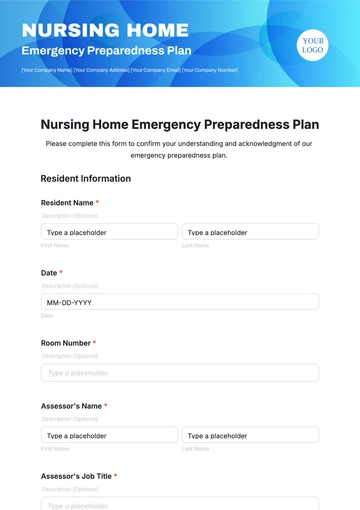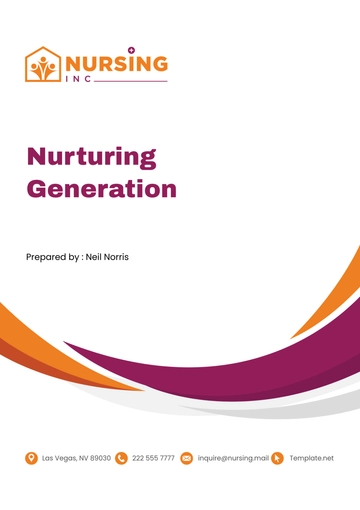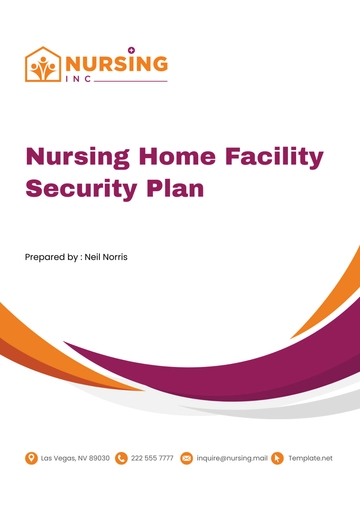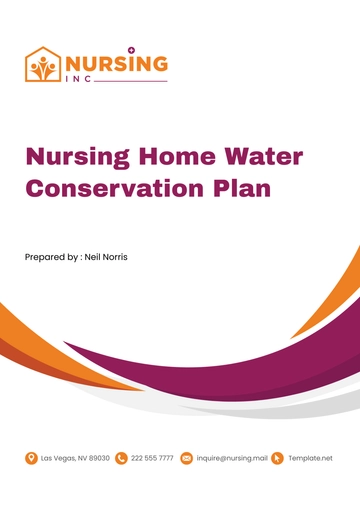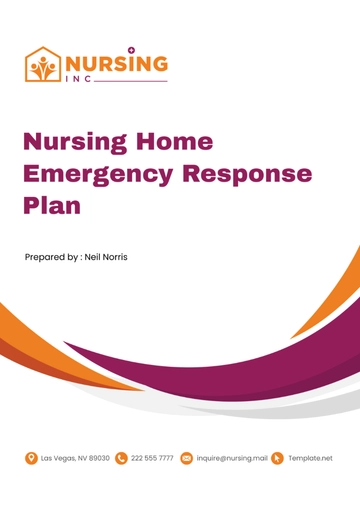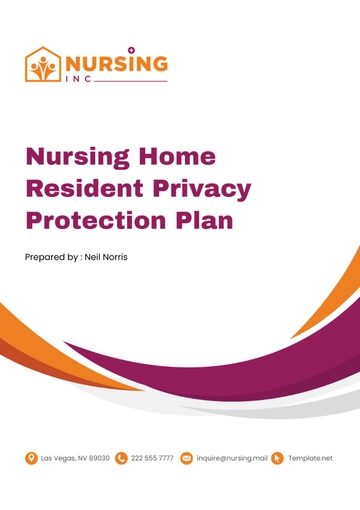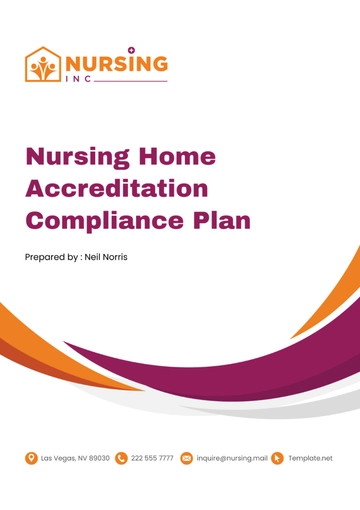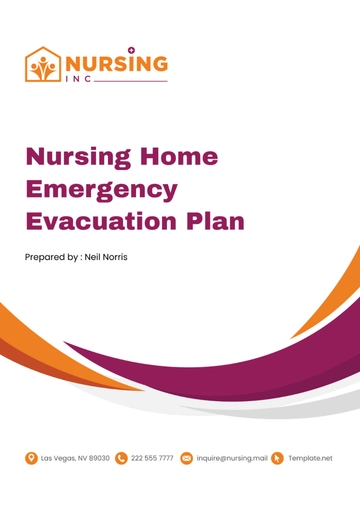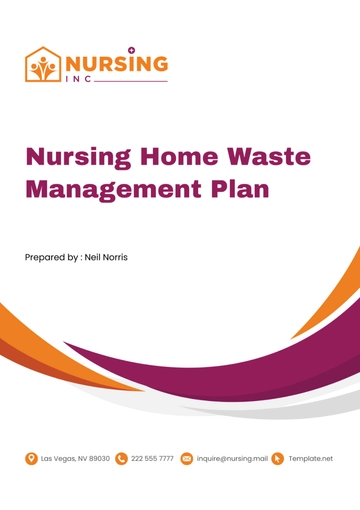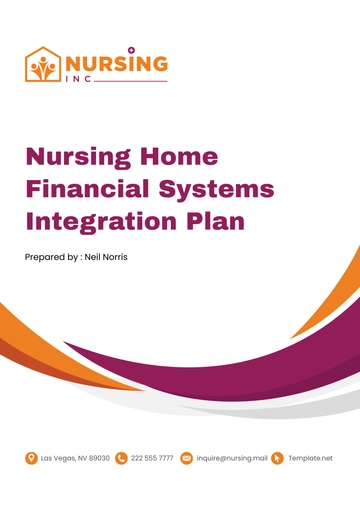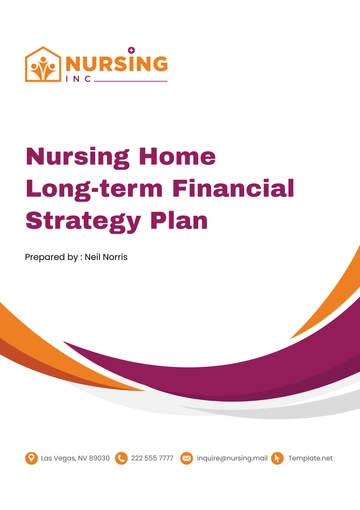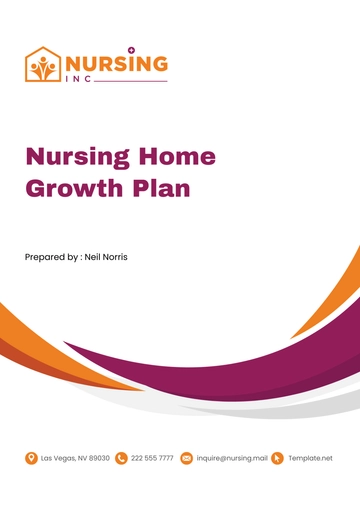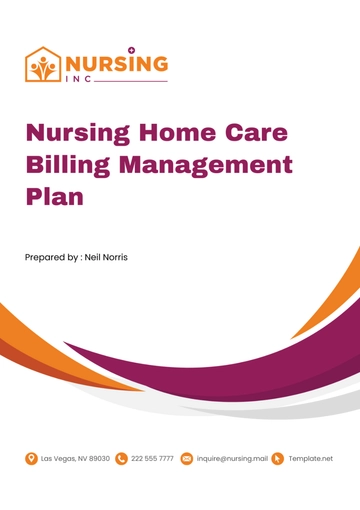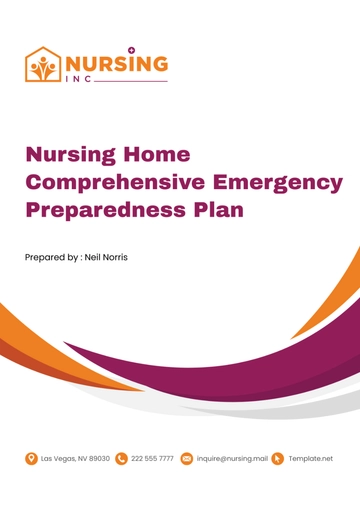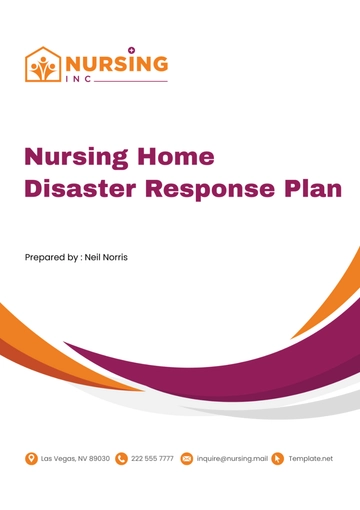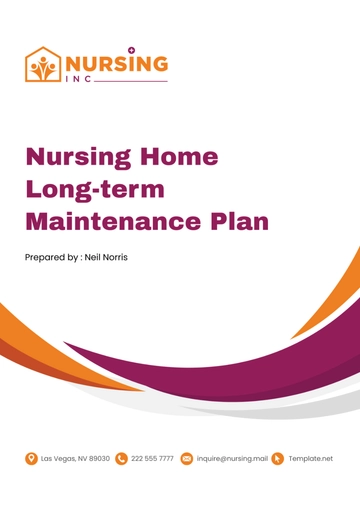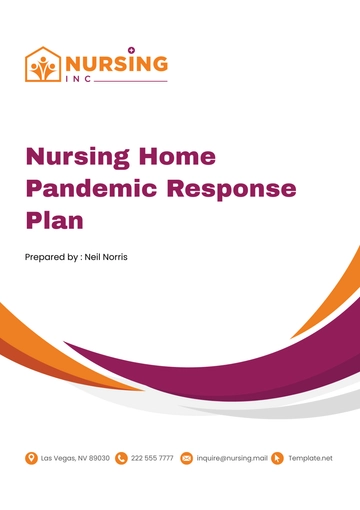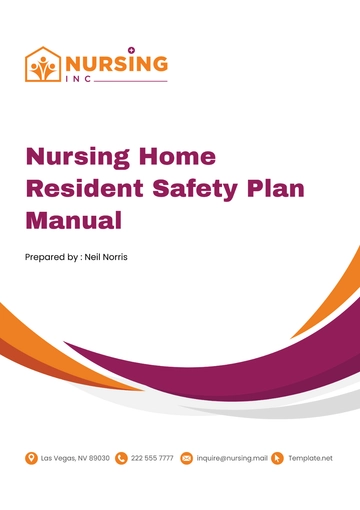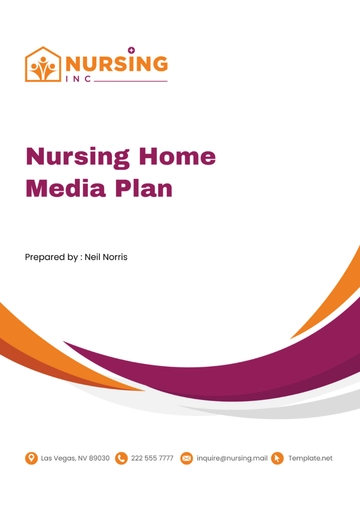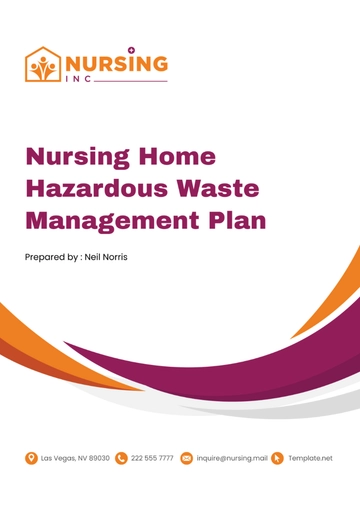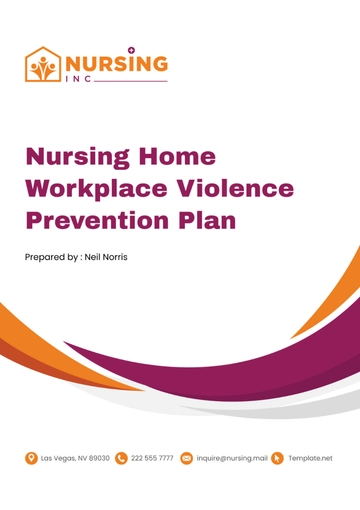Free Nursing Home Water Conservation Plan
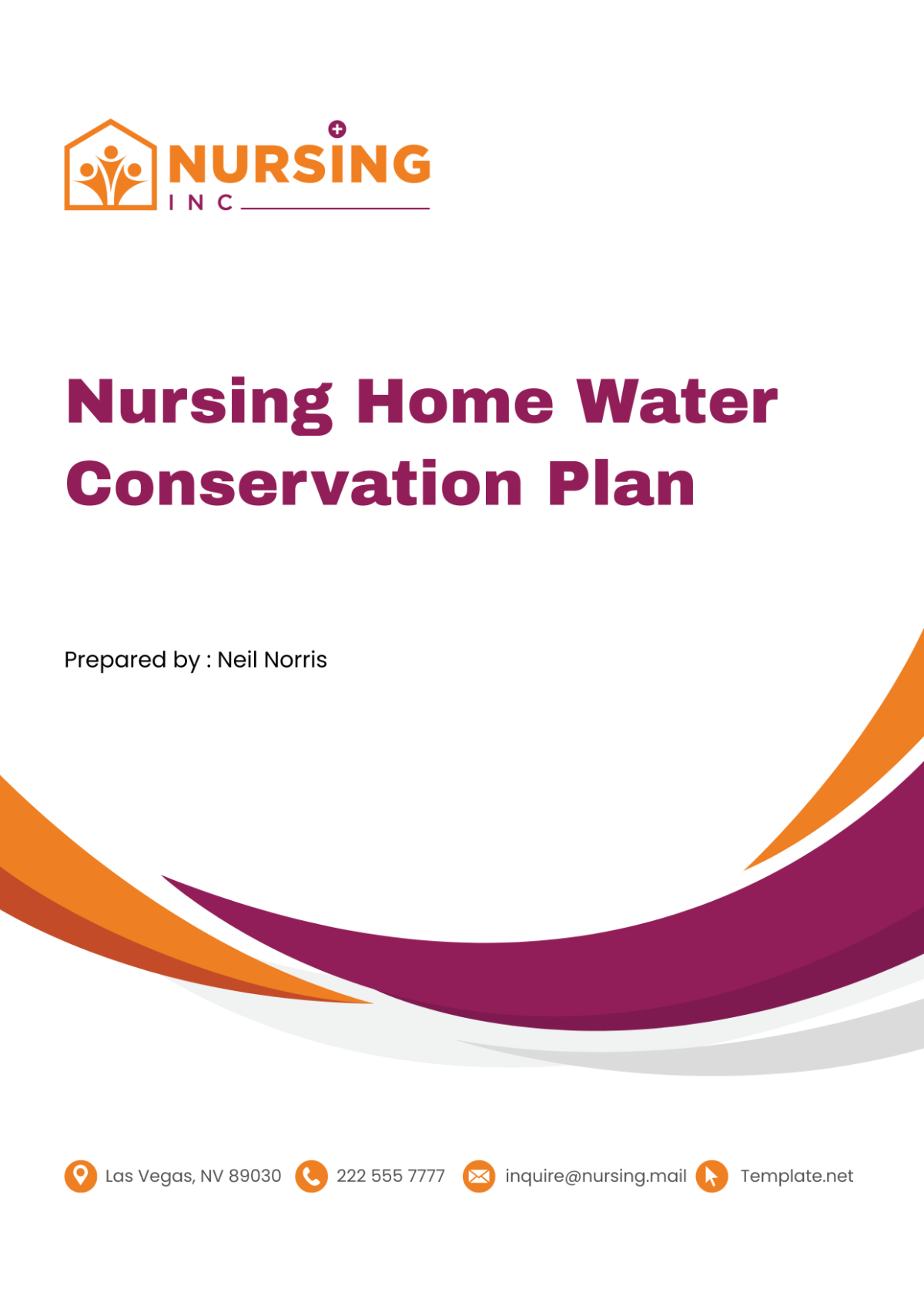
I. Objectives
The Nursing Home Water Conservation Plan for [Your Company Name] is designed to foster a sustainable approach to water usage within our facilities. The primary objective is to implement a series of strategic actions and policies that not only reduce our overall water consumption but also instill a culture of water efficiency among our staff and residents. This plan includes the installation of advanced water-saving technologies, regular audits and inspections to ensure compliance and efficiency, and comprehensive educational programs aimed at raising awareness about water conservation. By integrating these elements, we aim to achieve substantial water savings and contribute positively to environmental sustainability.
II. Goals and Targets
Our goals and targets for the Water Conservation Plan are ambitious yet achievable, designed to prompt significant improvements in our water management practices:
Goal | Target |
|---|---|
Reduce overall water consumption | 20% reduction within a year |
Install water-saving devices | 100% completion within 6 months |
Conduct audits and inspections | Once every two months |
Enforce policies | 100% compliance |
Promote water-conscious culture | All staff and residents actively involved |
Reduce overall water consumption: Aim for a 20% reduction within one year through various conservation measures and system optimizations.
Install water-saving devices: Ensure that 100% of applicable devices are upgraded to water-efficient models within 6 months, dramatically reducing the volume of water used in daily operations.
Conduct audits and inspections: Perform bi-monthly water usage audits to identify inefficiencies and areas for improvement, ensuring ongoing compliance with our conservation goals.
Enforce policies: Achieve 100% compliance with all water conservation policies to ensure every team member contributes to our sustainability objectives.
Promote water-conscious culture: Engage all staff and residents in water conservation efforts, ensuring they are not only aware but are active participants in saving water.
Through these targeted efforts, we aim to not only meet but exceed our water conservation goals, setting a standard for environmental stewardship within the healthcare industry.
III. Strategies to Achieve Objectives
To achieve the outlined objectives, our approach integrates several key strategies:
Invest in Efficient Water Systems and Devices: We are committed to upgrading our existing water systems with the latest in water-saving technology. This includes the installation of devices that are specifically designed to minimize water waste without compromising service quality.
Provide Comprehensive Training: Both staff and residents will receive ongoing training on the importance of water conservation and practical ways to reduce water usage. This education will cover everything from daily water use habits to operational procedures that ensure water efficiency.
Develop and Enforce Water Conservation Policies: We will formalize our commitment to water conservation through clear policies and procedures. These guidelines will be rigorously enforced, with regular reviews to ensure they remain effective and are adhered to by everyone in the facility.
Regular Audits and Monitoring: Continuous monitoring of water usage will help us identify trends, detect leaks, and understand usage patterns. These audits will enable us to make informed decisions about where to focus our conservation efforts.
Cultural Promotion of Water Conservation: Cultivating a water-conscious culture is essential. We will promote this through internal campaigns, incentives for water-saving achievements, and regular communication of the benefits of water conservation.
IV. Water-saving Systems and Devices
In our commitment to reducing water consumption, the following water-saving systems and devices will be installed across our facility:
Low-Flow Showers and Faucets: These devices are designed to significantly reduce water flow while maintaining adequate pressure, providing a comfortable yet efficient user experience.
Dual Flush Toilets: These toilets allow for a choice between a full or reduced flush, which significantly lowers water use per flush based on the waste type.
Automatic Shut-off Faucets: Installed in common areas, these faucets automatically stop water flow after a set time, preventing water wastage.
The installation of these systems is expected to play a crucial role in achieving our water reduction targets. By adopting these technologies, we ensure that our facility not only conserves water but also reduces operational costs associated with high water usage.
Together, these strategies and tools embody our commitment to a sustainable future, showcasing our dedication to conserving resources and promoting environmental stewardship within the nursing home community.
V. Staff and Resident Training
At [Your Company Name], we recognize that education is a cornerstone of effective water conservation. As such, we have developed a comprehensive training program for both staff and residents, designed to instill a deep understanding of water conservation principles and practical application. These training sessions will be conducted quarterly and will cover a range of topics:
Understanding Water Conservation: Educating participants on the global and local importance of water conservation, and the environmental and economic impacts of reduced water usage.
Practical Conservation Tips: Offering easy-to-implement water-saving tips that staff and residents can use in their daily routines, such as turning off taps while brushing teeth or repairing leaks promptly.
Proper Use of Water-Saving Devices: Training on how to effectively use installed water-saving devices like low-flow fixtures and dual flush toilets to maximize their benefits.
Behavioral Change: Encouraging behaviors that contribute to water savings, supported by motivational strategies to foster long-term habit changes.
Interactive workshops, demonstrations, and regular feedback sessions will ensure that the training is not only informative but also engaging and adaptable to the needs of all participants.
VI. Policies and Procedures
To ensure the success of our water conservation efforts, [Your Company Name] will implement stringent water conservation policies and procedures. These policies will serve as the backbone of our strategy, providing clear and enforceable guidelines on water usage:
Water Usage Guidelines: Detailed instructions on the appropriate use of water resources in various facility operations, from kitchen use to landscaping.
Enforcement of Water-Saving Practices: Mechanisms to ensure that all staff and residents adhere to established water conservation practices, with consequences for non-compliance.
Regular Policy Updates: Continuous evaluation and updating of policies to reflect technological advancements in water conservation and feedback from the community.
These policies will be communicated through training sessions, posted notices throughout the facility, and inclusion in resident and employee handbooks, ensuring they are well understood and integrated into daily routines.
VII. Audit and Monitoring
Continuous monitoring and regular audits are vital to assess the effectiveness of our water conservation strategies and identify areas for improvement. [Your Company Name] will implement a rigorous auditing process:
Scheduled Water Usage Audits: Conducted bi-monthly, these audits will measure water usage across different areas of the facility to identify abnormal consumption patterns that may indicate leaks or inefficiencies.
Real-Time Monitoring Systems: Installation of advanced water metering technology to provide real-time data on water consumption, allowing for immediate detection of issues and swift corrective action.
Audit Reporting: Comprehensive reports will be generated post-audit, detailing findings and recommending actions. These reports will be reviewed by facility management and used as a basis for adjusting water conservation practices.
This structured audit and monitoring approach will ensure that our water conservation efforts are continually optimized for maximum effectiveness.
VIII. Culture of Water Consciousness
Creating a culture of water consciousness within [Your Company Name] involves more than just policy and training; it requires the engagement and commitment of every individual in the facility. To cultivate this culture:
Incentive Programs: Implementing reward systems for departments or individuals who demonstrate significant water conservation achievements.
Regular Communication: Using newsletters, bulletin boards, and digital screens to share water-saving tips, success stories, and water usage data to keep everyone informed and motivated.
Community Events: Organizing water conservation events and challenges that encourage participation and raise awareness about the importance of water conservation.
These initiatives will help embed water conservation into the facility’s ethos, making it a shared responsibility among all who live and work here.
IX. Review and Improvements
To ensure the continued relevance and effectiveness of the Nursing Home Water Conservation Plan, [Your Company Name] will regularly review and refine its strategies. This review process will include:
Evaluation of KPIs: Assessing whether key performance indicators such as water usage reductions and participation rates are being met.
Feedback Mechanisms: Gathering input from staff and residents on the practical aspects of the conservation measures, using surveys and suggestion boxes.
Plan Adjustments: Based on the feedback and data collected, making necessary adjustments to the plan to address shortcomings and incorporate new technologies or methods.
This iterative process of review and improvement will enable [Your Company Name] to maintain a dynamic and effective water conservation strategy, adapting to new challenges and opportunities as they arise, ensuring sustainability and efficiency in all our water-related practices.
- 100% Customizable, free editor
- Access 1 Million+ Templates, photo’s & graphics
- Download or share as a template
- Click and replace photos, graphics, text, backgrounds
- Resize, crop, AI write & more
- Access advanced editor
Explore the Nursing Home Water Conservation Plan Template from Template.net! This comprehensive and customizable template helps nursing homes develop effective water conservation strategies. With our AI editor tool, tailor the plan to your facility's specific needs and goals. Reduce consumption, lower costs, and promote sustainability effortlessly.
You may also like
- Finance Plan
- Construction Plan
- Sales Plan
- Development Plan
- Career Plan
- Budget Plan
- HR Plan
- Education Plan
- Transition Plan
- Work Plan
- Training Plan
- Communication Plan
- Operation Plan
- Health And Safety Plan
- Strategy Plan
- Professional Development Plan
- Advertising Plan
- Risk Management Plan
- Restaurant Plan
- School Plan
- Nursing Home Patient Care Plan
- Nursing Care Plan
- Plan Event
- Startup Plan
- Social Media Plan
- Staffing Plan
- Annual Plan
- Content Plan
- Payment Plan
- Implementation Plan
- Hotel Plan
- Workout Plan
- Accounting Plan
- Campaign Plan
- Essay Plan
- 30 60 90 Day Plan
- Research Plan
- Recruitment Plan
- 90 Day Plan
- Quarterly Plan
- Emergency Plan
- 5 Year Plan
- Gym Plan
- Personal Plan
- IT and Software Plan
- Treatment Plan
- Real Estate Plan
- Law Firm Plan
- Healthcare Plan
- Improvement Plan
- Media Plan
- 5 Year Business Plan
- Learning Plan
- Marketing Campaign Plan
- Travel Agency Plan
- Cleaning Services Plan
- Interior Design Plan
- Performance Plan
- PR Plan
- Birth Plan
- Life Plan
- SEO Plan
- Disaster Recovery Plan
- Continuity Plan
- Launch Plan
- Legal Plan
- Behavior Plan
- Performance Improvement Plan
- Salon Plan
- Security Plan
- Security Management Plan
- Employee Development Plan
- Quality Plan
- Service Improvement Plan
- Growth Plan
- Incident Response Plan
- Basketball Plan
- Emergency Action Plan
- Product Launch Plan
- Spa Plan
- Employee Training Plan
- Data Analysis Plan
- Employee Action Plan
- Territory Plan
- Audit Plan
- Classroom Plan
- Activity Plan
- Parenting Plan
- Care Plan
- Project Execution Plan
- Exercise Plan
- Internship Plan
- Software Development Plan
- Continuous Improvement Plan
- Leave Plan
- 90 Day Sales Plan
- Advertising Agency Plan
- Employee Transition Plan
- Smart Action Plan
- Workplace Safety Plan
- Behavior Change Plan
- Contingency Plan
- Continuity of Operations Plan
- Health Plan
- Quality Control Plan
- Self Plan
- Sports Development Plan
- Change Management Plan
- Ecommerce Plan
- Personal Financial Plan
- Process Improvement Plan
- 30-60-90 Day Sales Plan
- Crisis Management Plan
- Engagement Plan
- Execution Plan
- Pandemic Plan
- Quality Assurance Plan
- Service Continuity Plan
- Agile Project Plan
- Fundraising Plan
- Job Transition Plan
- Asset Maintenance Plan
- Maintenance Plan
- Software Test Plan
- Staff Training and Development Plan
- 3 Year Plan
- Brand Activation Plan
- Release Plan
- Resource Plan
- Risk Mitigation Plan
- Teacher Plan
- 30 60 90 Day Plan for New Manager
- Food Safety Plan
- Food Truck Plan
- Hiring Plan
- Quality Management Plan
- Wellness Plan
- Behavior Intervention Plan
- Bonus Plan
- Investment Plan
- Maternity Leave Plan
- Pandemic Response Plan
- Succession Planning
- Coaching Plan
- Configuration Management Plan
- Remote Work Plan
- Self Care Plan
- Teaching Plan
- 100-Day Plan
- HACCP Plan
- Student Plan
- Sustainability Plan
- 30 60 90 Day Plan for Interview
- Access Plan
- Site Specific Safety Plan
